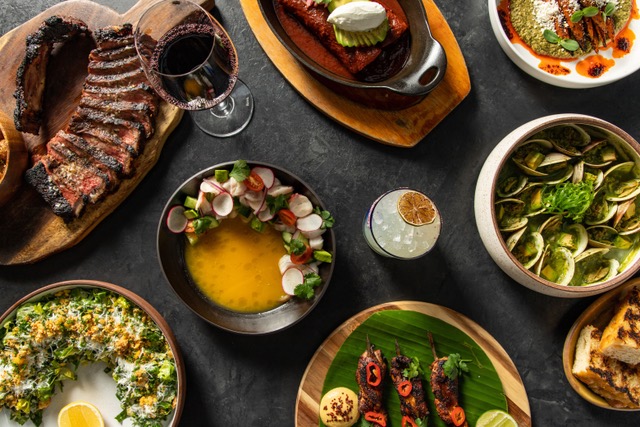20+ Wineries and 7 SoCal restaurants come together in O.C. for inaugural event
CHAAK Kitchen will host its inaugural Mexican Food & Wine Festival on Saturday, October 19 from 2—6 p.m., seven local restaurants and 29 wineries will come together to celebrate Mexico’s rich culinary and winemaking culture. Restaurateurs Ed & Gabbi Patrick, owners of CHAAK and Gabbi’s Mexican Kitchen, have partnered with La Competencia Imports’ Founder Tom Bracamontes to present this unique event. Guests will be able to taste exclusive Mexican wines from Baja California, Coahuila, Zacatecas, Querétaro, Guanajuato, Aguascalientes, and San Luis Potosí.
“This event is a first, with so many talented chefs and wineries representing the rich culinary culture of Mexico… truly a feast for the senses,” explains Gabbi Patrick, who serves as Executive Chef of CHAAK Kitchen and Gabbi’s Mexican Kitchen, both recognized by the prestigious Michelin Guide. “Whether you’re a wine enthusiast or just curious about Mexico’s wines, this is an opportunity to embark on an adventure and meet the winemakers whose passion goes into every bottle.”
Guests will be able to experience the rich culinary traditions of Mexico, from the vibrant Yucatán to the hearty northern regions, as local chefs come together for an afternoon. Participating restaurants include Alta Baja Market, CHAAK Kitchen, Gabbi’s Mexican Kitchen, Gema, Maizano, SOCALO, and Tres Muchachos Wine Bar & Kitchen.
The CHAAK Mexican Food & Wine Festival takes place at CHAAK Kitchen on Saturday, October 19 from 2-6 p.m. Tickets must be purchased in advance for $125 per guest (excluding tax & Eventbrite fees) online HERE (https://www.eventbrite.com/e/chaak-mexican-food-wine-festival-tickets-919683507127). All attendees must be over 21 years of age.
ABOUT CHAAK KITCHEN
Inspired by Executive Chef Gabbi Patrick’s Yucatecan Roots, CHAAK features Mayan staples of pibil, recados, seafood, smoke, and exotic spices combined with her signature modern flare. Located in Southeastern Mexico, the Yucatán Peninsula differs from other regional Mexican cuisine with Spanish, Caribbean, and Mediterranean influences, dense tropical climate, and deep roots of the native Mayan culture.
CHAAK Kitchen is located at 215 El Camino Real in Tustin. For more information, please visit https://chaakkitchen.com/.



You must be logged in to post a comment.